
WooCommerce vs. Shopify: Which Ecommerce Platform Is Right For Your Business?
Launching your own eCommerce website is an exciting move whether you're new to online shopping or have been selling for years on Walmart, Amazon, and eBay. It's also a challenging one.
Choosing between WooCommerce and Shopify for your business and customers is a difficult decision to make, but one that becomes a lot easier once you have all of the data.
What to consider when choosing an eCommerce platform
To determine the best eCommerce platform for your business, you must first determine your business’ needs. Specifically, you need to consider;
- Statistics – Which tool can help you get set up for success, based on your market?
- Features – What do you need your website to do?
- Seller tools – What tools and software will help you succeed?
- Ease of use – How technically capable are you and your team at building an eCommerce website?
- Customizability – How much control you need over your website
- Payment methods – What payment methods do you want to offer your shoppers?
- Integrations – Will you require integrations with different apps and services (e.g., outsourced fulfillment, online marketplaces, and cart abandonment software)?
- Support – How efficient is their team when something goes wrong?
- Fees – Costs and how much you’ll need to invest in building your website
- Scalability – What are your plans for future growth?
Other concerns, like as accounting, subscription models, or even overseas storefronts, may be necessary depending on your type of business.
An overview of WooCommerce vs. Shopify
WooCommerce and Shopify are two of the most popular eCommerce systems on the market, and they're utilised to create professional and successful eCommerce websites all over the world.
Shopify is an all-in-one platform, which means that you can use it to create an online store, accept payments, manage orders, and control your inventory from a single dashboard. You simply select a pre-built theme, start customizing, and away you go.
WooCommerce is an open-sourced eCommerce platform that operates as a WordPress plugin. This means that it’s entirely customizable for your needs, allowing you – or your developer – to build and run a tailored online store for your customers.
1) Statistics
We’ve already mentioned the worldwide use of both platforms, but it’s not until you see the figures that you realize just how popular they are.
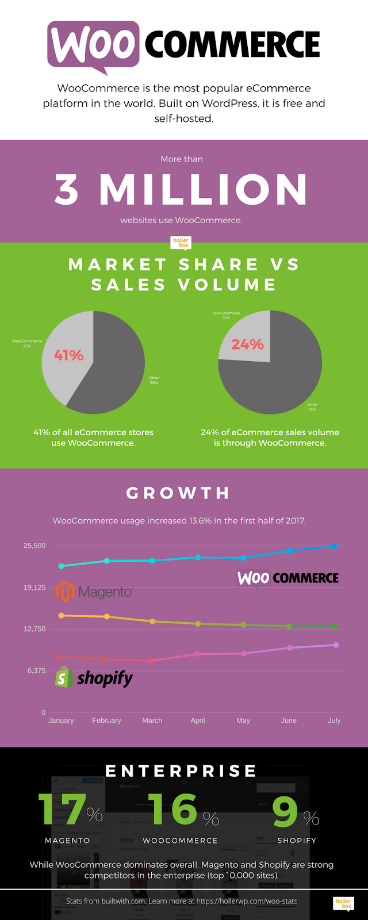
Shopify hosts over 1,000,000 businesses worldwide. From 2016 to 2018, its stores generated $183 billion in economic activity, and in this year’s Black Friday and Cyber Monday weekend, it processed more than $2.9 billion worth of sales. Big brands using Shopify include Brooklyn Museum, Kylie Cosmetics, and Rebecca Minkoff.
WooCommerce powers more than 2,000,000 active stores across the globe. In fact, WooCommerce is used by 22% of the top one million eCommerce websites and has a 94% market share of WordPress eCommerce plugins. Famous brands using WooCommerce include All Blacks, Weber, Singer, and Ripley’s Believe It or Not!
2) Features
When it comes to features, it’s a tight race between WooCommerce and Shopify. Both platforms are incredibly feature-rich and provide everything that you need to build and run an online store. What differs between the two is the features that come as standard.

Since Shopify is an all-in-one platform, it comes with features such as abandoned cart recovery, discount codes, and over 100 payment options already included.
In contrast, WooCommerce functions more like a “build your own” eCommerce platform – allowing you to choose and add the extensions you require, many of which offer advanced functionality over Shopify’s basic features.
Which is better depends on your requirements. If you’re looking for a quick and easy set-up, with an all-in-one product, Shopify wins. However, if you want the flexibility to tailor the platform to your precise needs, WooCommerce comes out top.
3) Seller tools
WooCommerce and Shopify do much more than simply help you to build an eCommerce website. They enable you to market your business, manage orders, and delight your customers, using a variety of seller tools.

For Shopify, similarly with features, many popular seller tools are included in the platform.
In WooCommerce, many additional features require additional extensions, but there may be a larger selection.
Your choice here should depend on how much time, money, and expertise you have available to create a customized eCommerce platform.
4) Ease of use
It’s important that you can use your platform to its full functionality, without requiring additional help, training, or budget.
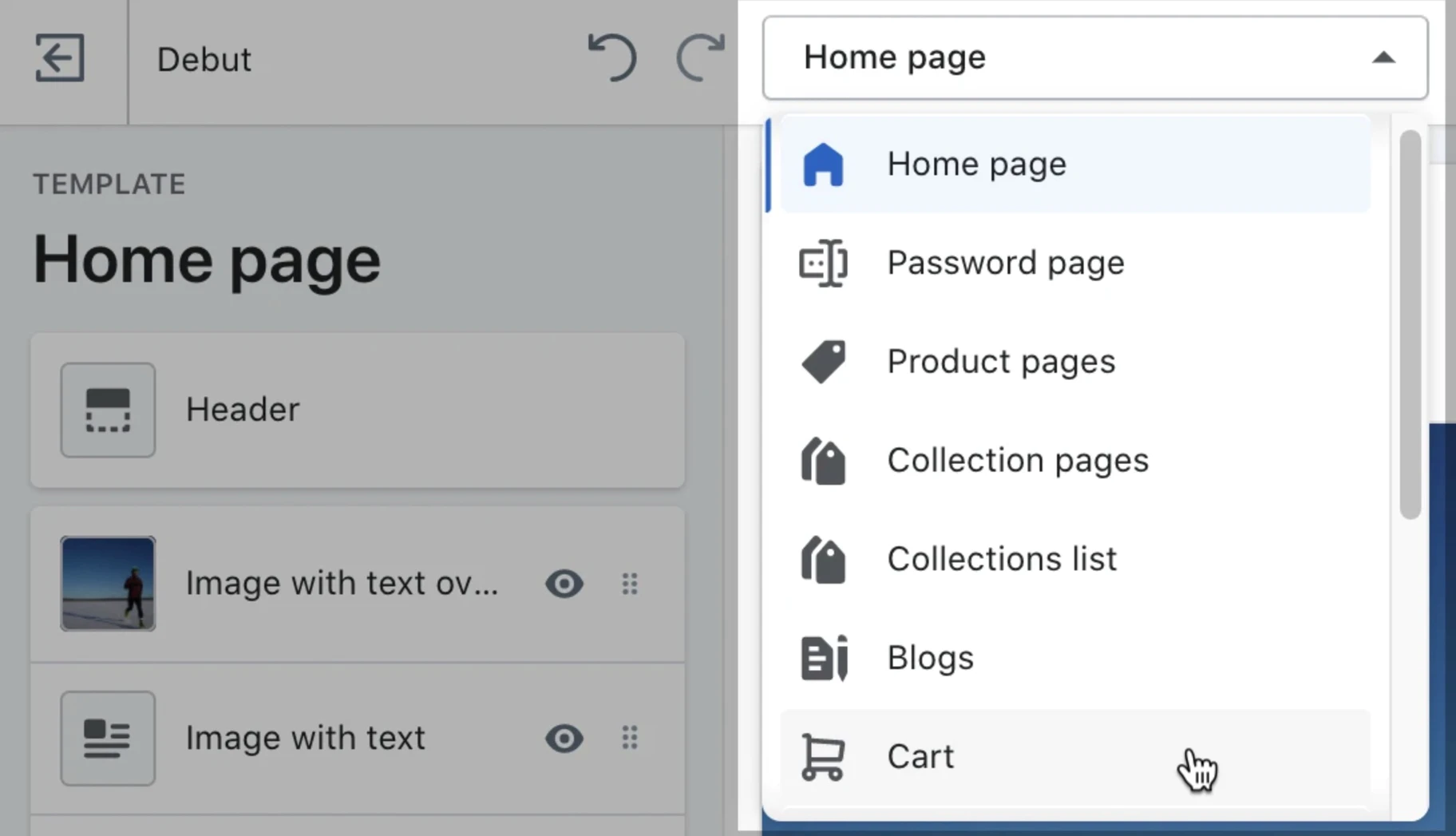
There’s no doubt about it that Shopify is the easier platform of the two, requiring limited technical ability to generate outstanding results quickly. Furthermore, Shopify runs automatic product updates, so you don’t have to worry about doing it yourself in the future.
In comparison, WooCommerce requires a little more technical competency, which can be confusing and time-consuming for first-time store builders. However, if you have the time and patience to get to grips with WooCommerce, you can build a highly customized and effective eCommerce website, tailored to your precise needs – especially if you’re already familiar with WordPress.
5) Customizability
When selling online, it’s essential to stand out from your competitors and create a memorable customer experience. To do this, you need to be able to customize your store.
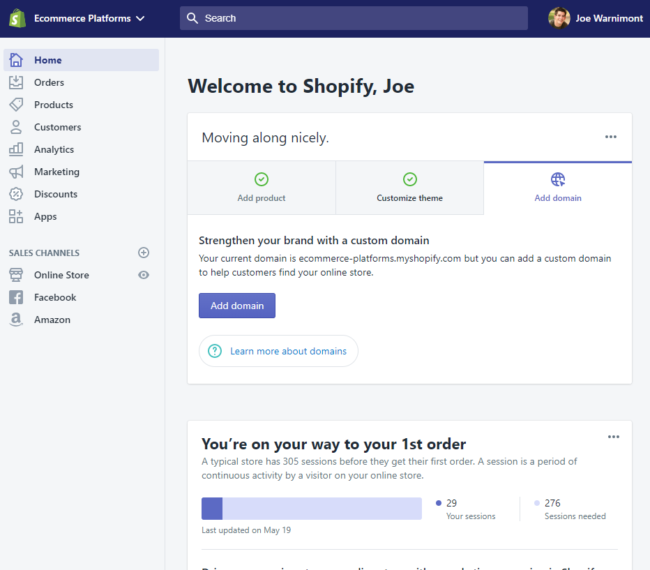
Shopify has more than 70 free and paid Shopify themes to choose from and quickly tailor. This is great for first-time store builders and those with limited technical abilities. However, customization is limited to the theme, so if you require a unique store or location customization, you’ll need to upgrade to Shopify Plus – a sister platform aimed at enterprise brands.
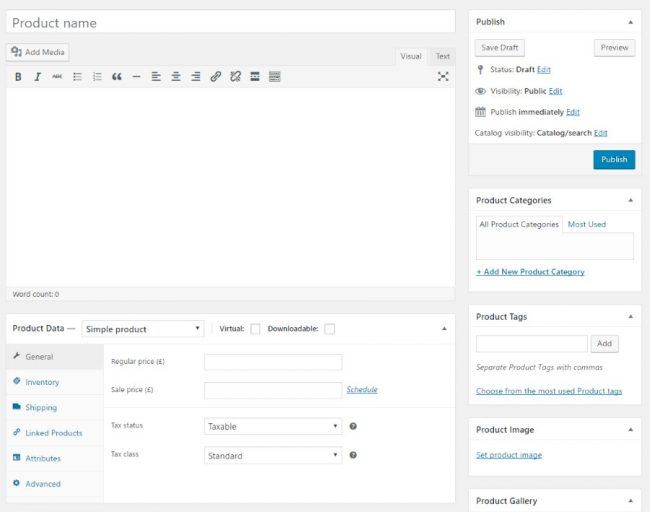
WooCommerce is the opposite. The open-source nature of the platform means that it is entirely customizable, and you have more than 1,000 themes to work with. This platform was built with developers in mind, so if you’re working with a developer, Woo is excellent for creating a wholly unique store.
6) Payment methods
Both WooCommerce and Shopify offer over 100 payment gateways, including Stripe, PayPal, credit and debit cards, Apple Pay, and Square. These come either built-in or available through an integration.
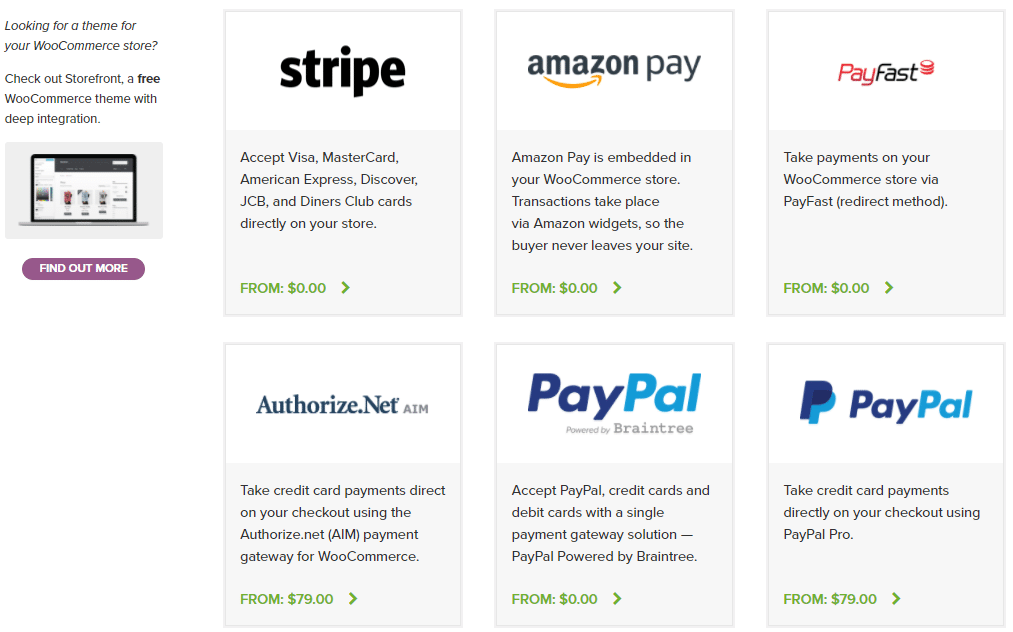
The main difference between WooCommerce vs. Shopify is the associated payment method costs.
Basic Shopify users are charged 2% per transaction (1% for Shopify and 0.5% for Advanced Shopify) for providers other than Shopify Payments.
While WooCommerce charges no transaction fee, you may be required to pay for your chosen payment provider integration.
7) Integrations
Apps and integrations can take your eCommerce platform and business to the next level, enabling you to achieve even more with your store.
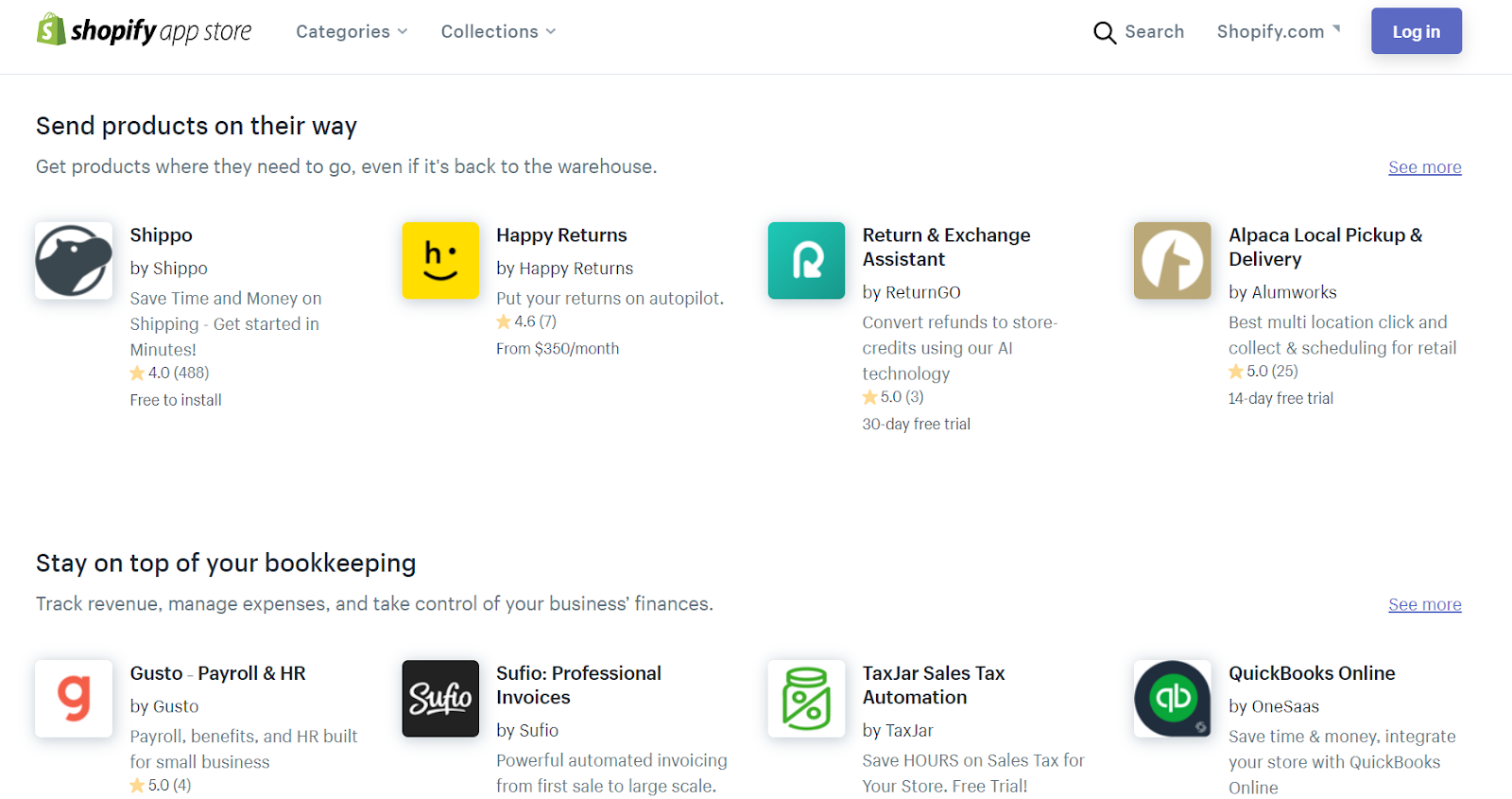
The Shopify App store has more than 3,200 different Shopify integrations and apps of the same variety and substance as WooCommerce’s. You can integrate with Shopify 2-day fulfillment providers, run cart abandonment software, and even automate your Shopify store.
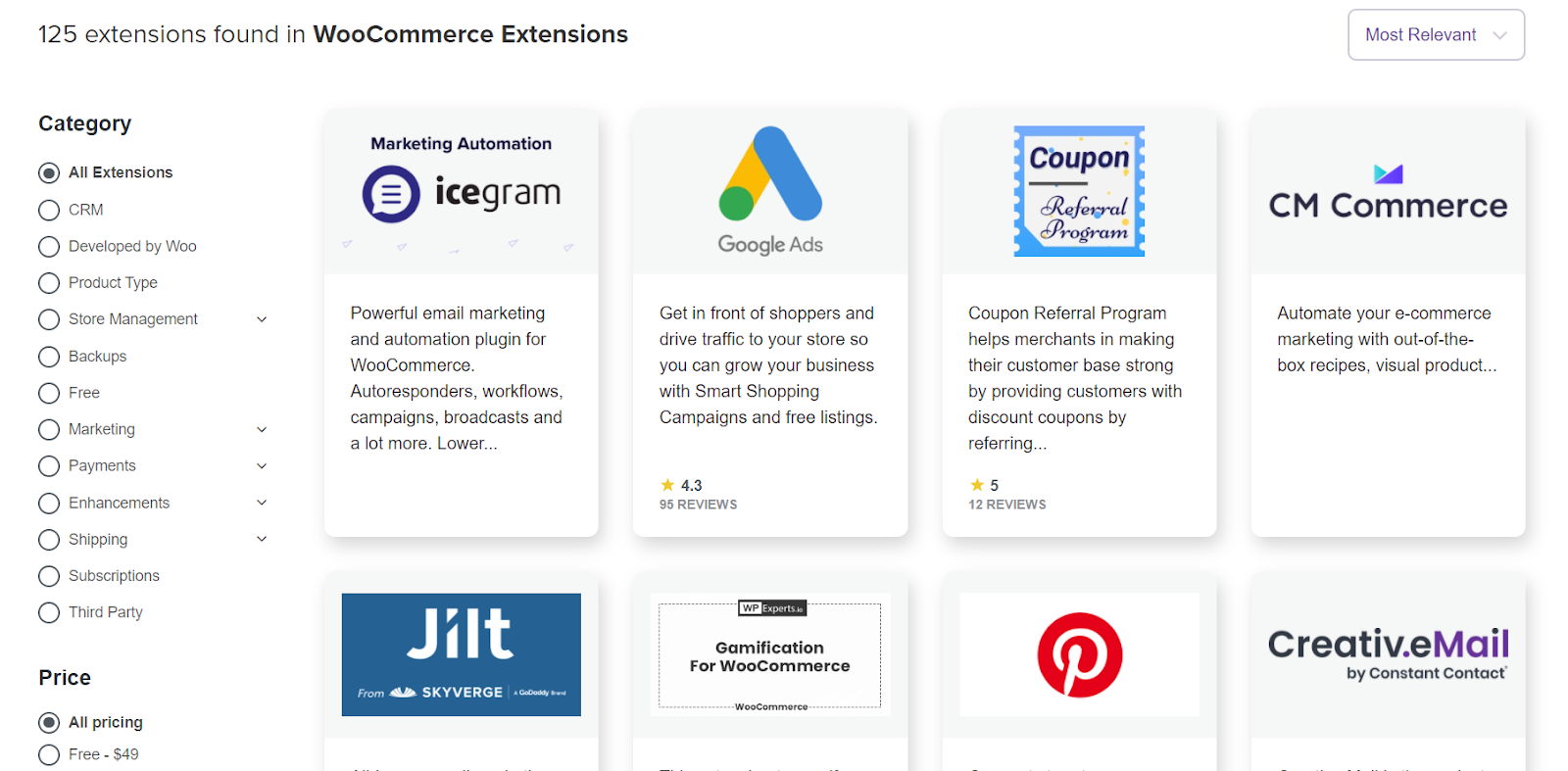
WooCommerce has more than 400 official extensions and hundreds of unofficial extensions from multi-channel management and social media integrations to Google Ads and Mailchimp.
If you’re struggling to decide between WooCommerce vs. Shopify, speak to your existing software providers and service partners to see which platform they best integrate with.
8) Support
If things do go wrong, you want to ensure that you have the support needed to resolve problems quickly.
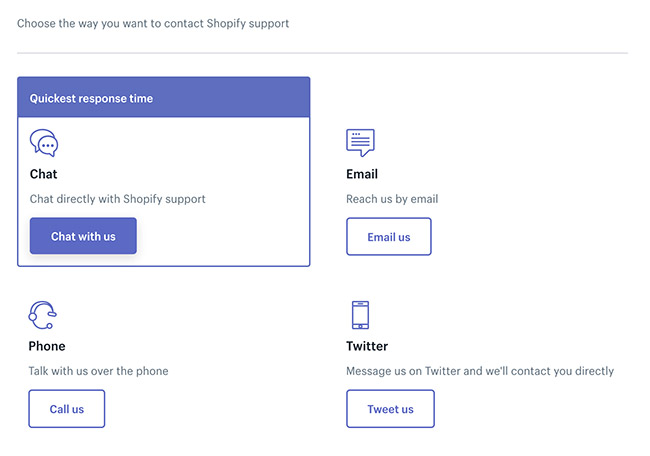
Shopify offers customers 24/7 support before, during, and after your free 14-day trial. This includes telephone, live chat, and email support, alongside a library full of guides.

WooCommerce also has a significant collection of user guides alongside forum support, ticket requests, and recommended developers. However, if you require immediate hand-holding, Shopify is a little more accessible for the everyday seller.
9) Fees
On to the important stuff, how much do the platforms cost to start and run?
Shopify operates a fixed pricing model, based on the plan used:
- Basic Shopify = $29/month
- Shopify = $79/month
- Advanced Shopify = $299/month.
Each plan comes with a different level of features and online credit card rates:
- Basic Shopify = 2.9% + 30¢
- Shopify = 2.5%
- Advanced Shopify = 2.4%.
You are also charged an additional fee for all payment providers other than Shopify Payments (mentioned above). And, if you require more features of customizability than the Advanced Shopify plan, you must upgrade to Shopify Plus, which is priced on application.
WooCommerce is technically free, and available functionality isn’t tied to plans. However, it comes with additional costs such as hosting, a domain name, security, and add-on fees. This can be difficult to calculate and could result in a bill higher than expected. However, a WooCommerce developer should be able to give you an accurate estimate.
10) Scalability
And finally, scalability. As your store grows, you want to ensure that your platform can grow with it, without requiring an expensive migration.

With Shopify, you can easily move from the basic plan up to the Advanced plan as your needs evolve. However, if you require advanced customization, multiple stores, or B2B functionality, you will need to migrate to Shopify Plus, which can be costly.

With WooCommerce being completely customizable, your store can grow or shrink as required – enabling you to make big plans now.
WooCommerce vs. Shopify
So which platform is better for you? If you’re a first-time store builder looking to quickly get set up, featured on Google, and making sales, Shopify is a perfect fit. If you require advanced functionality, customization, and room for significant growth, then WooCommerce or Shopify Plus is best suited to your needs.
If you like the post. Do comment, share and follow elitsavvy.

